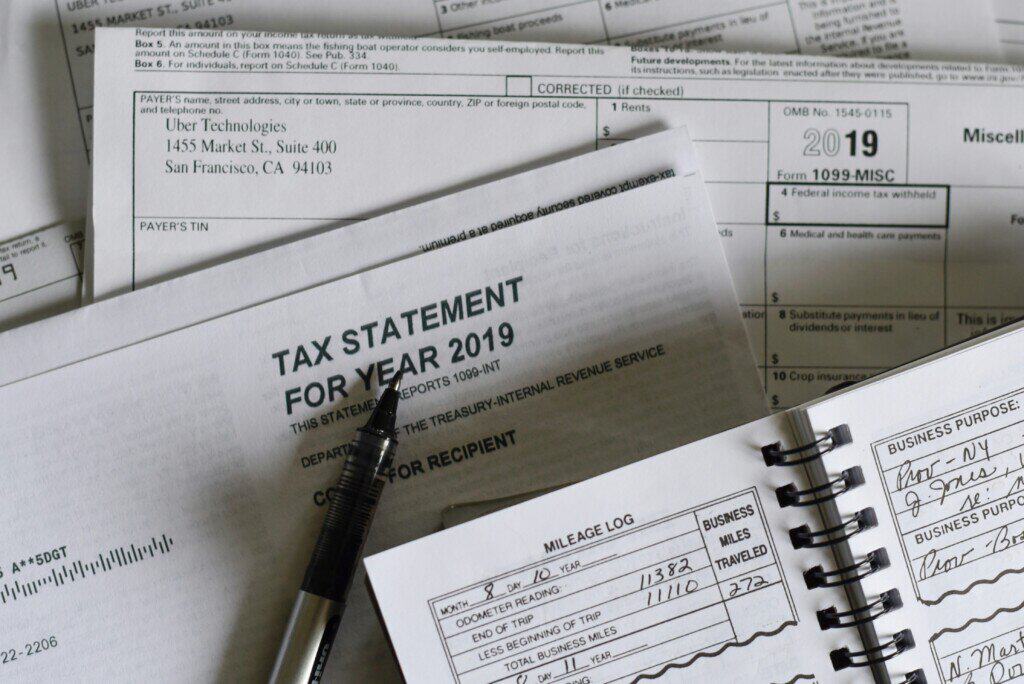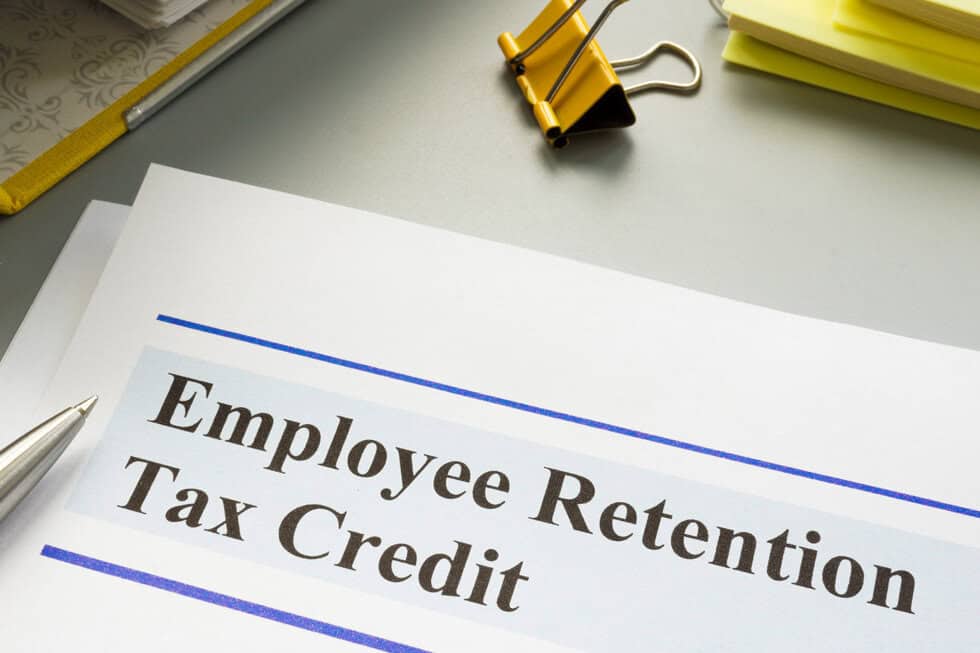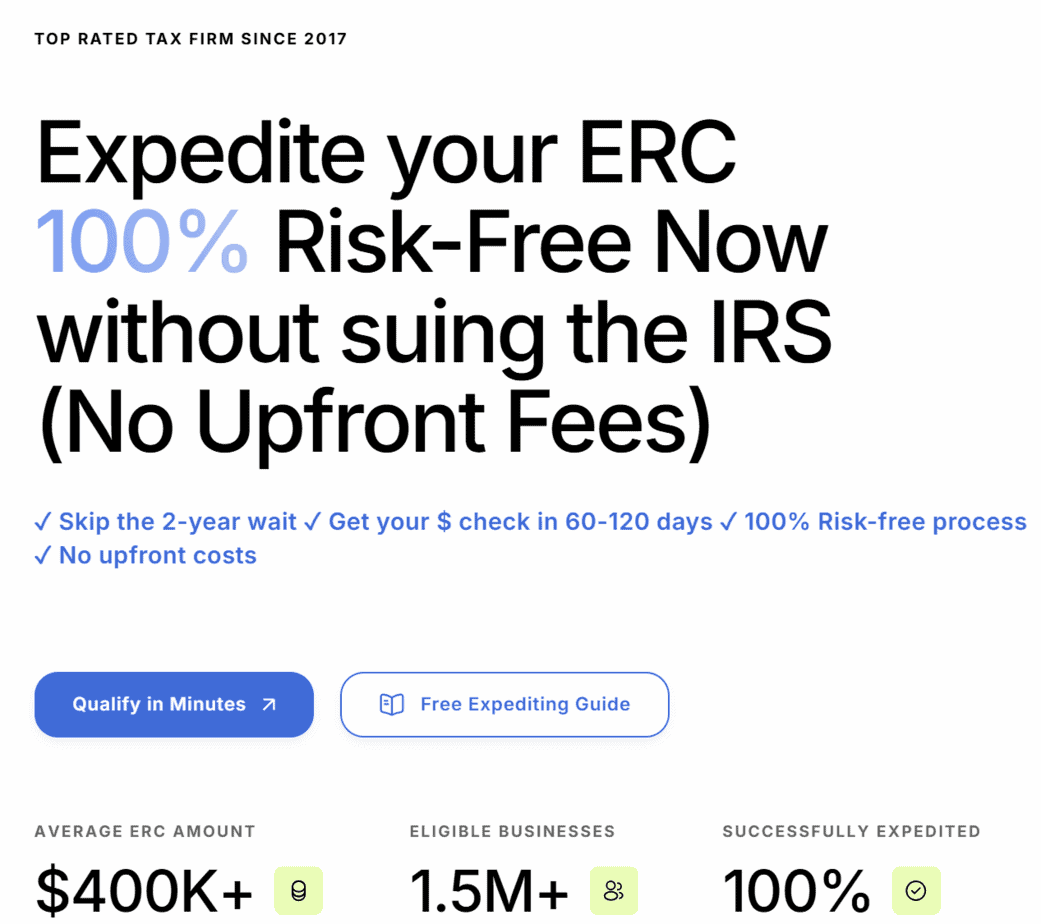- What Is the ERC Moratorium?
- How the ERC Moratorium Affects Businesses
- What if a Business Owner has Already Filed but is Now Unsure the Deserve the Credit
- The ERC Withdrawal Program: How to Withdraw a Claim
- Increased IRS Audits and Enforcement Actions
- ERC Audit Risks to Watch For
- When Will the ERC Moratorium End?
- What Businesses Should Do Next
Last Updated on April 22, 2025 by Ewen Finser
The Employee Retention Credit (ERC) was a critical relief measure introduced under the CARES Act in 2020 to help businesses retain employees during the COVID-19 pandemic. However, due to widespread fraud, abuse, and compliance concerns, the IRS announced a moratorium on ERC processing in September 2023.
This moratorium significantly impacts businesses that have already filed claims and those considering filing for the credit retroactively. Given the complexity of the ERC and increased IRS scrutiny, it’s essential for business owners, payroll professionals, and tax advisors to fully understand how the ERC moratorium works, its implications, and what steps businesses should take moving forward.
What Is the ERC Moratorium?
The ERC Moratorium refers to the IRS’s decision to halt the processing of new ERC claims due to rising concerns about fraudulent claims and aggressive third-party promoters misleading businesses into filing ineligible claims. The moratorium was announced on September 14, 2023, and was originally set through at least December 31st, 2023, but was and still is subject to extensions.
The moratorium applies to the following:
- All new ERC claims (No processing of new claims during the moratorium)
- Pending claims (Already filed but not yet processed…these will be subject to stricter review)
- Businesses seeking to withdraw dubious claims (The IRS introduced a withdrawal process for those who believe they were misled into filing fraudulent claims)
The moratorium was not a complete cancellation of the ERC program, but rather a temporary halt to allow the IRS to strengthen fraud detection mechanisms, process legitimate claims with greater scrutiny, and investigate questionable claims more effectively.
Why Did the IRS Implement the ERC Moratorium?
The IRS imposed the moratorium primarily due to rampant fraudulent claims fueled by third-party promoters, often called ‘ERC mills.’ These unscrupulous firms aggressively marketed their services, luring desperate business owners with promises of massive refunds—sometimes in the hundreds of thousands—while pocketing hefty up-front fees.
But the fraud didn’t stop there. Another major trigger for the moratorium was a tidal wave of attempted scams involving nonexistent businesses and fake Employer Identification Numbers (EINs). Scammers filed claims for companies that never operated, some even fabricating payroll records out of thin air. ‘
The result? Billions of dollars in payouts flowed to ghost entities before the IRS could catch on. This double whammy—exploitative ERC mills and outright criminal fraud—forced the IRS to slam the brakes on ERC processing in September 2023 to beef up security, protect taxpayer funds, and separate legitimate claims from the sea of fakes.
For honest business owners, this crackdown was a frustrating hurdle and delay, but as a direct response to an unprecedented wave of abuse, resulted in a positive outcome by filtering out many of the “bad apples” within the industry.

Personal Run Ins with ERC Mills, and Why the Moratorium Was Necessary
As a CPA who services dozens of businesses across the U.S., a handful of my clients were almost caught in the dragnet of what seemed like a “too good to be true” opportunity that these ERC Mills were pitching.
Luckily, they double checked with a qualified professional, otherwise they could’ve been on the hook for hundreds of thousands of dollars, plus interest, years later when the IRS reviewed their claim with more scrutiny. They still received the credit, just not in the amount that the ERC mills claimed they were entitled to.
IRS Backlogs and Processing Delays
In addition to the fact that many of the claims were suspicious, the IRS was already struggling with millions of ERC claims, some taking 6-12 months for processing. The moratorium allowed the IRS to focus on pending claims and filter out illegitimate filings before additional funds were erroneously or fraudulently disbursed to businesses that did not deserve them.
Why ERC Claims Are Taking So Long
Even before the moratorium hit in September 2023, ERC claims were a waiting game—taking anywhere from 6 to 12 months to process, leaving business owners stuck in limbo, refreshing their mailboxes and bank accounts.
Now, with millions of claims piled up in the IRS’s backlog and new fraud-detection measures in overdrive, that timeline has stretched into what feels like forever. Some claims filed pre-moratorium are still gathering dust, while new ones are flat-out paused until at least December 31, 2024—and insiders whisper 2025 could be more realistic. If you’re a small business owner counting on that cash to pay off debt, cover payroll, or just keep the lights on, this delay isn’t just inconvenient—it’s a punch to the gut.
So, what’s causing the bottleneck? First, volume: the IRS got slammed with over 3.6 million ERC claims by mid-2023, way more than they’d staffed for. Then came the fraud wave—think fake businesses, inflated wages, and ERC mills churning out shaky filings. The IRS had to pivot, slowing everything down to double-check every claim. They’re cross-referencing payroll data, auditing revenue drops, and chasing down scammers who siphoned off billions.
The good news? Understanding this mess can help you plan your next move. If your claim’s pending, don’t just sit tight—check its status with the IRS’s ‘Where’s My Refund’ tool or call their ERC hotline (though good luck getting through). Better yet, you may even choose to explore getting expert assistance with a ERC Expediting service that can rush your claim to the front of the line here
Most ERC applications are stalled with traditional CPAs and accounting firms. The only firm I've found that is able to expedite and get ERC funds approved in this environment is IRSplus.
How the ERC Moratorium Affects Businesses
The moratorium impacts businesses differently, depending on their filing status:
- For businesses that have not yet filed the ERC: New claims will not be processed until the moratorium is lifted.
- For businesses with pending ERC claims: Claims already in the system before the moratorium will not be automatically rejected but will undergo stricter scrutiny. The returns will be subject to increased processing times as the IRS conducts more audits and investigations. Additionally, if a business suspects its claim was inaccurate or fraudulent, the business should consider withdrawing it before facing IRS penalties.
Pending ERC Claims: What to Expect
Say you filed your ERC claim in July 2023—it’s not dead in the water, but it’s definitely under a microscope. The IRS is digging deeper into every detail, which translates to longer processing waits—sometimes stretching well beyond the old 6-12 month norm—and a heightened risk of landing on their audit list.
It’s a stressful spot to be in, and it’s all too common since the moratorium tightened scrutiny. Don’t let that be your story. If you’re unsure about your claim’s status or whether your paperwork holds up, a quick review with a trusted ERC company could save you from a major headache—or worse, a costly repayment demand down the line. A little proactive effort now beats sweating it out later.

What if a Business Owner has Already Filed but is Now Unsure the Deserve the Credit
For businesses that have already received their ERC funds, The IRS has begun auditing questionable ERC refunds, meaning businesses that wrongfully claimed the credit could be required to repay it with penalties and interest. Employers who legitimately received the ERC but lack proper documentation should also prepare for potential IRS inquiries.
The ERC Withdrawal Program: How to Withdraw a Claim
To help businesses that were misled into filing improper ERC claims, the IRS introduced an ERC Withdrawal Program. But who should consider withdrawing an ERC claim?
- For starters, businesses that filed an ERC claim but now realize they do not qualify.
- Additionally, businesses that filed through an aggressive ERC mill and were pressured into applying may want to consider withdrawing if they’re not certain they’re entitled to 100% of the funds.
- Finally, businesses that lack documentation to support their ERC claim should withdraw their claim.
But how do you actually withdraw your ERC claim? Well, it’s pretty simple actually! All that needs to be done is submit a withdrawal request following IRS guidelines found on the IRS ‘s portal. The business owner would provide employer details and relevant ERC claim information after ensuring the claim is still pending, and that’s it.
However, after a claim is disbursed it cannot be withdrawn but must instead be repaid with interest. Businesses opting to withdraw an ERC claim will not face IRS penalties or interest on the withdrawn claim.

How to Withdraw an ERC Claim Step-by-Step
Good news: withdrawing a shaky ERC claim is simpler than you think—and it could save you from a nightmare audit. Here’s how: 1) Confirm your claim is still pending (disbursed funds can’t be withdrawn), 2) Gather your employer details and claim info, 3) Submit the request via the IRS portal. Done! Most withdrawals process within weeks, and you’ll dodge penalties entirely.
Please understand that there are conditions to who can or cannot withdraw a claim. If your ERC claim is still pending—meaning the IRS hasn’t processed it or paid you yet—you can withdraw it completely. The IRS treats withdrawn claims as if they were never filed, and you won’t face penalties or interest. To do this, you’d need to make a copy of your adjusted employment tax return (like Form 941-X), write “Withdrawn” in the left margin of the first page, have an authorized person sign and date it, and fax it to the IRS’s dedicated ERC withdrawal line at 855-738-7609. Mailing is an option too, but it’s slower.
If you’ve already received a refund check but haven’t cashed or deposited it, you can still withdraw the claim using the same process. You’d return the uncashed check along with your withdrawal request. This is a lifeline for businesses realizing they might’ve been misled into filing by aggressive promoters.
Increased IRS Audits and Enforcement Actions
The IRS has significantly ramped up ERC audits and criminal investigations to crack down on fraudulent claims. As I mentioned above, businesses that are at high risk of audit are ones that filed ERC claims through known ERC mills, as well as filings with insufficient or no supporting documentation.
Other business owne’s that may face scrutiny are ones that took PPP loans and incorrectly claimed the ERC on the same wages, or claims from large businesses that misapplied eligibility rules.
Penalties for erroneous claims are reasonable, but can be punitive in nature depending on circumstances. If you erroneously took the credit and were not entitled to it, simply pay it back. If you purposefully misrepresented your filings, you could face penalties up to 75% of the ERC amount, as well as repaying the credit.
Finally, if a business owner willfully committed fraud, they could face criminal charges for tax fraud. This would include but not being limited to jail, penalties, and repaying the ERC.
ERC Audit Risks to Watch For
The IRS isn’t messing around—audits are up, and penalties can sting. Take a $50,000 ERC claim: an honest mistake might mean repaying it with interest, but willful fraud could slap you with a $37,500 penalty—75% of the credit—plus jail time if it’s egregious. So, what sets off the IRS’s alarm bells? They’re hunting for specific red flags that scream ‘fraud’ or ‘error,’ and knowing them could mean the difference between a clean slate and a nightmare audit. Here’s what they’re zeroing in on:
1. Claims Filed by ERC Mills: If your claim came through a third-party promoter—those aggressive ‘ERC mills’ with a reputation for pushing claims even when unwarranted—it’s a neon sign for the IRS. These outfits often fudge eligibility or inflate numbers to max out refunds, leaving you holding the bag when the truth comes out. The IRS has a growing list of known mills under investigation, so if your filing traces back to one, expect extra scrutiny.
2. Sketchy PPP Overlap: Double-dipping is a huge no-no. The IRS flags claims where businesses used the same wages to qualify for both the Paycheck Protection Program (PPP) loans and the ERC. It’s not just sloppy bookkeeping—it’s illegal. If your records don’t clearly separate PPP-funded wages from ERC-eligible ones, you’re waving a red flag they won’t ignore.
3. Missing or Shaky Documentation: No payroll records? No proof of revenue drops or government shutdowns? You’re in trouble. The IRS wants hard evidence—think detailed payroll reports, quarterly tax filings, or orders proving you were forced to close or scale back. If your claim hinges on vague estimates or missing paperwork, it’s a prime audit target.
4. Nonexistent Businesses or Fake EINs: Scammers tried flooding the system with claims for ghost companies—businesses that never existed or EINs cooked up out of thin air. If your EIN doesn’t match a legit, active business with a real operational history, the IRS’s fraud filters will catch it fast. Even honest filers get tangled in this net if their paperwork looks off.
5. Inflated Employee Counts or Wages: Some claims report phantom employees or juiced-up wage totals to snag bigger credits. The IRS cross-checks payroll data against tax filings and Social Security records. If you claimed 50 employees but only reported 10 elsewhere—or wages that don’t match reality—they’ll dig deeper.
6. No Real COVID Impact: The ERC was for businesses hit hard by the pandemic—think significant revenue declines (50% in 2020, 20% in 2021) or government-ordered shutdowns, or bottlenecks/limitations. If your business thrived or stayed fully open while claiming the credit, the IRS will question your eligibility and require evidence to document the claimed challenges. They’ve seen too many filers stretch the rules here.
7. Large Businesses Misapplying Rules: Big companies claiming ERC often trip over complex eligibility rules—like proving a ‘partial suspension’ of operations. The IRS is skeptical of multimillion-dollar claims from firms that didn’t truly qualify, especially if they lean on vague interpretations instead of solid proof.
These red flags aren’t just guesses—the IRS has flagged over 1 million questionable claims since 2020, with billions tied to fraud. For honest business owners, it’s a gut punch to get lumped in with the scammers, but sloppy or shady filings make it easy for the IRS to pounce.
Don’t wait for that audit letter to land in your mailbox—get ahead of it with the right prep. Pull your records, double-check your eligibility, and if something smells off, act now to fix it before the IRS does it for you.
How to Prepare for an ERC Audit
If you are being audited in relation to the ERC credit, first ensure you have detailed payroll records, revenue decline calculations, and government shutdown documentation. If a business owner’s ERC claim was filed through a third-party firm, obtain a detailed breakdown of how eligibility was determined. If errors were found, the business owner should consider proactively amending returns before the IRS initiates an audit.
Most ERC applications are stalled with traditional CPAs and accounting firms. The only firm I've found that is able to expedite and get ERC funds approved in this environment is IRSplus.
When Will the ERC Moratorium End?
The IRS initially stated that the ERC moratorium would last until at least December 31, 2023, but there is no definitive timeline for when normal processing will resume. However, businesses should expect continued delays well into 2025, especially considering the enhanced IRS fraud detection measures, as well as ongoing audits and potential legislative changes impacting ERC eligibility.
Employers considering ERC claims should monitor IRS announcements and consult a CPA or a reputable firm such as IRSPlus to help navigate these increasingly gray areas.
What Businesses Should Do Next
The ERC moratorium presents risks for businesses that filed or plan to file ERC claims. However, the ERC is still a powerful tool for businesses that were affected during the pandemic. The ERC program was meant to provide critical relief to businesses during the pandemic, but misuse by third-party ERC mills and fraudulent filers has led to a major IRS crackdown.
For businesses that legitimately qualify, rigorous compliance and documentation will be essential moving forward. For those who wrongfully claimed the ERC, it’s not too late to take corrective action—withdrawing improper claims or amending filings can help avoid severe penalties and legal trouble.
As the IRS continues to investigate ERC fraud cases, businesses must stay informed, work with trusted tax professionals, and ensure compliance with all IRS regulations to avoid the risk of audits, penalties, and potential repayment obligations.
Most ERC applications are stalled with traditional CPAs and accounting firms. The only firm I've found that is able to expedite and get ERC funds approved in this environment is IRSplus.


